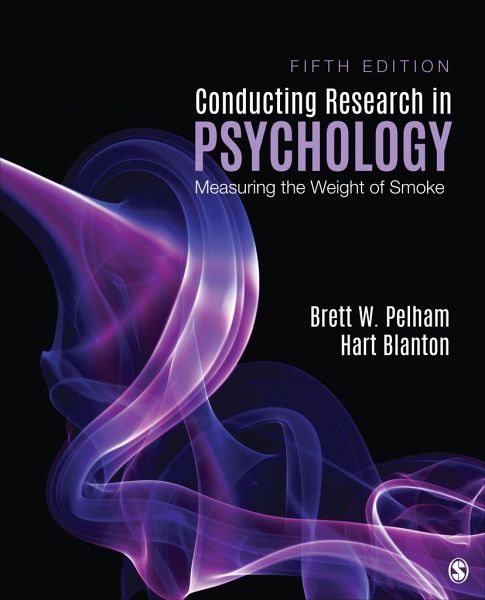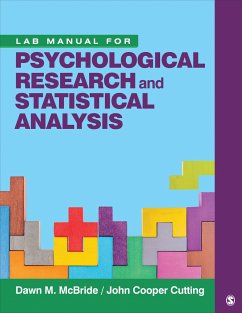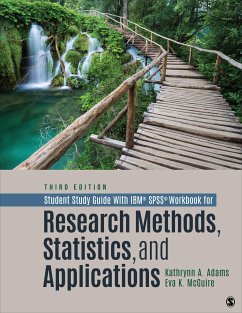
Conducting Research in Psychology
Measuring the Weight of Smoke
Versandkostenfrei!
Versandfertig in 2-4 Wochen

PAYBACK Punkte
90 °P sammeln!




Conducting Research in Psychology: Measuring the Weight of Smoke provides students an engaging introduction to psychological research by employing humor, stories, and hands-on activities.
Dieser Artikel kann nur an eine deutsche Lieferadresse ausgeliefert werden.
Brett Pelham grew up as the second of six children near the small town of Rossville, Georgia. Brett received his B.S. from Berry College in 1983 and received his Ph.D. from the University of Texas at Austin in 1989. He began thinking about this book while teaching statistics at UCLA but got serious about doing so while teaching statistics at UB (in Buffalo, NY). After leaving UB, Brett worked for a year as a visiting professor in marketing at Georgetown University. He was then lucky enough to work for about two years as a senior research analyst at Gallup. This was followed by two not-so-lucky years as a Program Director at the National Science Foundation. At the time of this writing (in January 2012) Brett was extremely excited to have just taken a position promoting graduate and postgraduate education in the Education Directorate at the American Psychological Association. With apologies to Lenny Bruce, you can see that Brett has had some difficulties holding down a regular job recently. The bulk of his research focuses on automatic social judgment and self-evaluation. Over the past two decades, he has taught courses in social psychology, research methods, statistics, social cognition, and the self-concept. In his spare time, he enjoys juggling, sculpting, listening to alternative rock music, cooking, and traveling. His two favorite activities while completing this textbook (in late 2011) were spending time with his 3-year-old daughter Brooklyn and his 8-year-old son Lincoln. Along with his wife LJ Pelham, Brett is co-inventor of the recently released card game PRIME. Along with his son Lincoln, he is co-inventor of the soon-to-be-released card game Cliff-Hanger. Along with his daughter Brooklyn, he is co-inventor of the never-to-be-released card game It's a Hat. You Like It? His most recent writing project is a novel tentatively entitled Elvis 2.0, which focuses on scientific and religious problems associated with the apparent resurrection of Elvis Presley.
Produktdetails
- Verlag: SAGE Publications Inc
- 5 Revised edition
- Seitenzahl: 624
- Erscheinungstermin: 18. Oktober 2018
- Englisch
- Abmessung: 232mm x 186mm x 33mm
- Gewicht: 1140g
- ISBN-13: 9781544333342
- ISBN-10: 154433334X
- Artikelnr.: 51521863
Herstellerkennzeichnung
Libri GmbH
Europaallee 1
36244 Bad Hersfeld
gpsr@libri.de
Für dieses Produkt wurde noch keine Bewertung abgegeben. Wir würden uns sehr freuen, wenn du die erste Bewertung schreibst!
Eine Bewertung schreiben
Eine Bewertung schreiben
Andere Kunden interessierten sich für











